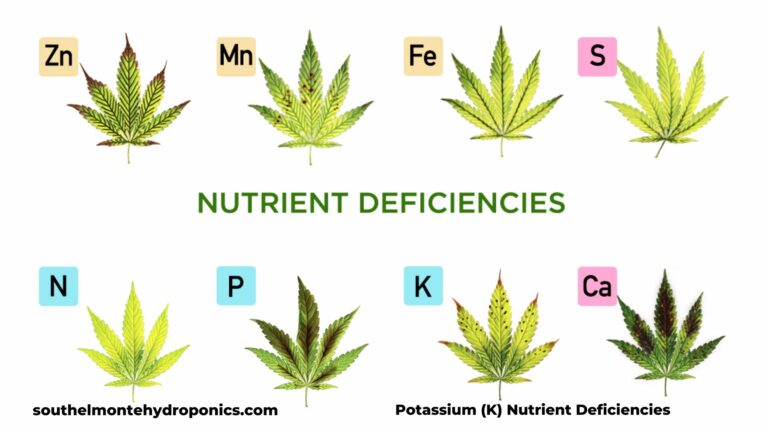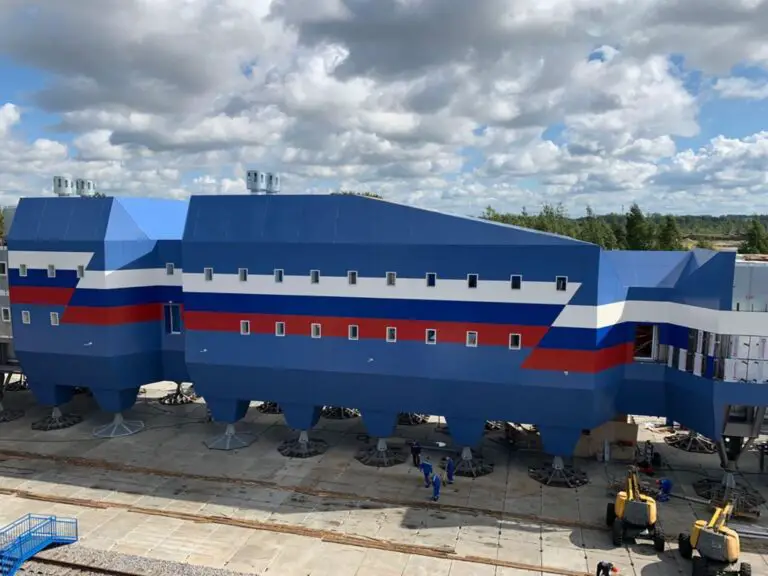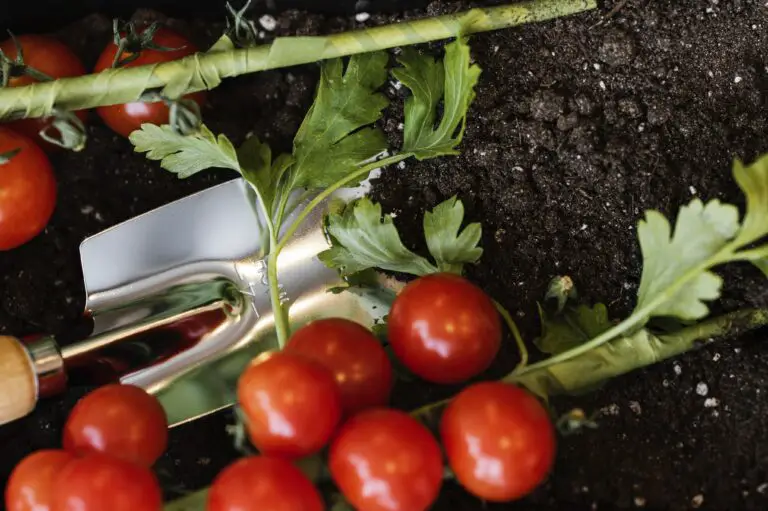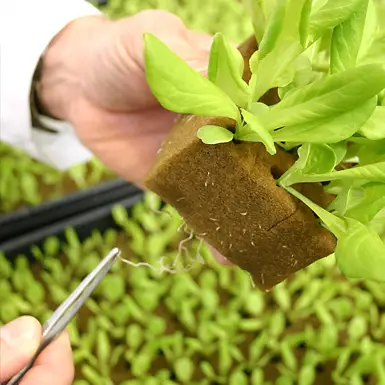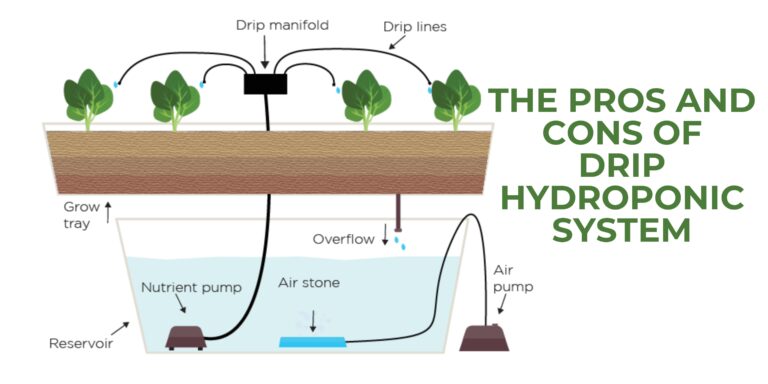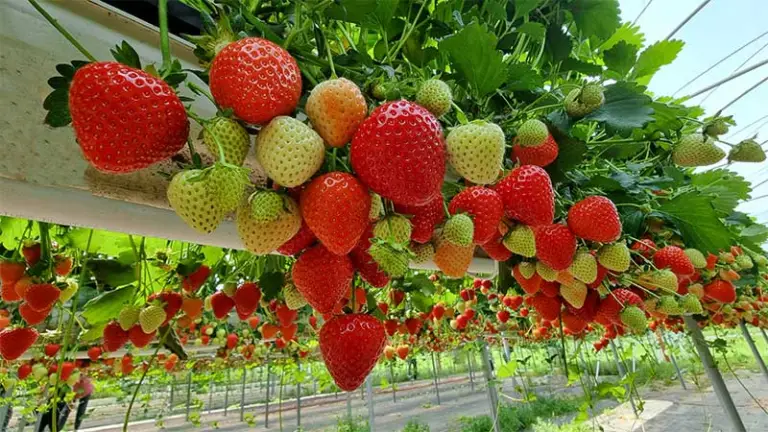Oxygen in Hydroponics: is it Important and The Best Way to Provide
Table of Contents: Oxygen in Hydroponics
Items for the blog topic “Why Oxygen is Important in Hydroponics and How to Provide It”:
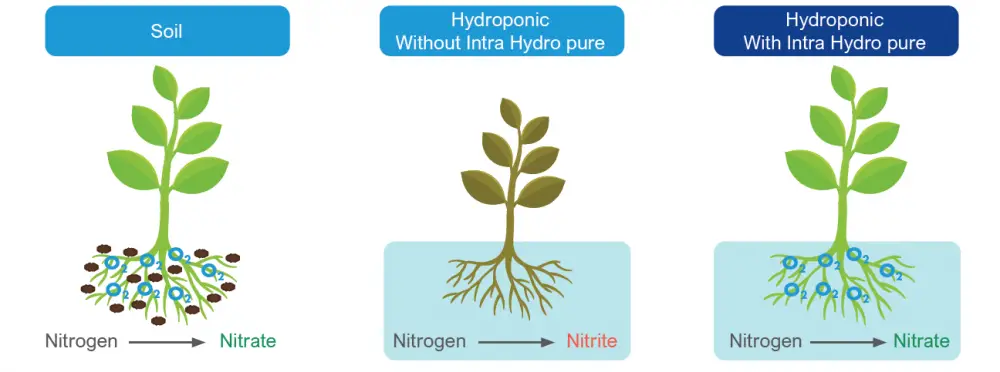
Oxygen in Hydroponics: Oxygen plays a crucial role in hydroponics, aiding in the growth and development of plants. In traditional soil-based gardening, plants receive oxygen from the air pockets within the soil. However, in hydroponics, where plants are grown in a nutrient-rich solution without the use of soil, the oxygen supply needs to be provided directly to the root system.
The presence of oxygen in the hydroponic system is essential for several reasons. Firstly, it promotes root health by preventing the accumulation of harmful bacteria and pathogens that thrive in oxygen-deprived environments. Secondly, oxygen facilitates nutrient absorption by the roots, allowing plants to efficiently uptake the essential elements they need for growth. Lastly, a well-oxygenated system aids in the conversion of carbohydrates into energy, enabling robust plant growth and crop yield.
To ensure optimal oxygen levels in a hydroponic setup, several factors need to be considered, including the types of hydroponic system, the temperature of the nutrient solution, and the water movement within the system. Inadequate oxygenation can lead to root rot, poor nutrient uptake, and stunted growth. Therefore, it is crucial for hydroponic enthusiasts to understand the science behind oxygenation and implement appropriate techniques to provide an optimal oxygen supply for their plants. In the following sections, we will delve deeper into the science of oxygenation in hydroponic systems and explore effective methods to increase oxygen levels within different types of setups.
• Oxygen is crucial for the growth and development of plants in hydroponics.
• In traditional soil-based gardening, plants receive oxygen from air pockets within the soil.
• In hydroponics, where plants are grown without soil, oxygen needs to be provided directly to the root system.
• The presence of oxygen in a hydroponic system prevents harmful bacteria and pathogens from accumulating.
• Oxygen facilitates nutrient absorption by the roots, allowing efficient uptake of essential elements for plant growth.
• Well-oxygenated systems aid in converting carbohydrates into energy, promoting robust plant growth and crop yield.
To ensure optimal oxygen levels in a hydroponic setup:
– Consider factors such as the type of hydroponic system used
– Monitor the temperature of the nutrient solution
– Pay attention to water movement within the system
Inadequate oxygenation can lead to issues such as root rot, poor nutrient uptake, and stunted growth. Therefore, it is important for hydroponic enthusiasts to understand how to provide an optimal oxygen supply for their plants. In upcoming sections, we will explore the science behind oxygenation in hydroponic systems and discuss effective methods for increasing oxygen levels in different types of setups.
Understanding the Role of Oxygen in Hydroponics
In the world of hydroponic gardening, oxygen plays a crucial role in the overall health and development of plants. While oxygen is abundant in the air we breathe, it is often overlooked when it comes to hydroponics. However, understanding the role of oxygen in hydroponics is essential for any gardening enthusiast looking to optimize their plant growth.
One of the primary functions of oxygen in hydroponics is its involvement in root respiration. In traditional soil gardening, roots have easy access to oxygen due to the air pockets within the soil. However, in hydroponic systems where plants are grown in water or other growing mediums, the roots have limited access to oxygen. As a result, the availability of oxygen in hydroponic systems becomes critical to ensuring that the plants receive the oxygen they need for healthy root development and optimum nutrient uptake.
Proper oxygenation in hydroponics also promotes the growth of beneficial bacteria and other microorganisms. These organisms play a vital role in breaking down organic matter and converting nutrients into forms that are readily available to plants. In oxygen-rich environments, these microorganisms thrive, creating a symbiotic relationship with the plants. This results in improved nutrient absorption, enhanced disease resistance, and overall better plant health. By understanding the role of oxygen and its effects on hydroponics, gardeners can take necessary steps to provide adequate oxygen to their plants, leading to healthier and more productive growth.
• Oxygen is essential for root respiration in hydroponics
• In traditional soil gardening, roots have easy access to oxygen through air pockets in the soil
• In hydroponic systems, where plants are grown in water or other growing mediums, roots have limited access to oxygen
• Adequate oxygen availability ensures healthy root development and optimum nutrient uptake in hydroponics
• Proper oxygenation promotes the growth of beneficial bacteria and microorganisms
• These organisms break down organic matter and convert nutrients into forms readily available to plants
• Oxygen-rich environments support the thriving of these microorganisms, leading to improved nutrient absorption and disease resistance
• Understanding the role of oxygen helps gardeners provide adequate oxygen levels for healthier and more productive plant growth
The Science Behind Oxygen in Hydroponics Systems
Oxygenation plays a crucial role in hydroponic systems, providing plants with the essential element they need to thrive. In hydroponics, where the roots of plants are submerged in a nutrient-rich solution instead of soil, the availability of oxygen becomes even more important.
The science behind oxygenation in hydroponic systems lies in the fact that plant roots require oxygen for cell respiration. Just like humans, plants need oxygen to convert nutrients into energy. Without an adequate oxygen supply, plants can suffocate, leading to stunted growth, root rot, and even plant death. In hydroponics, where plants rely on the nutrient solution for all their needs, it becomes vital to optimize oxygen levels to ensure healthy plant growth.
• Oxygen is essential for plant roots to undergo cell respiration
• Plants need oxygen to convert nutrients into energy
• Inadequate oxygen supply can lead to stunted growth, root rot, and plant death
• Hydroponic systems rely solely on the nutrient solution, making oxygen optimization crucial
Benefits of Oxygen in Hydroponics
Hydroponic systems provide an innovative way of cultivating plants by delivering nutrients directly to their roots through water. One crucial element for the success of such systems is oxygenation, which plays a vital role in supporting plant growth and development. The benefits of oxygenation in hydroponics are manifold, and understanding them will help gardeners maximize the potential of their crops.
Firstly, oxygenation enhances the absorption of nutrients by the plants, leading to improved overall growth. In a hydroponic system, plants rely solely on the provided nutrient solution, and oxygen plays a critical role in ensuring their roots can efficiently uptake these essential elements. When the roots are submerged in oxygen-rich water, they can absorb nutrients more effectively, resulting in faster and healthier plant growth. Additionally, proper oxygenation helps prevent root diseases and promotes the development of a robust root system, which is fundamental for improving nutrient uptake efficiency. By optimizing oxygen levels in the hydroponic system, gardeners can witness remarkable increases in crop yield and quality.
• Oxygenation enhances the absorption of nutrients by plants
• Oxygen-rich water allows for more efficient nutrient uptake
• Faster and healthier plant growth can be achieved with proper oxygenation
• Oxygenation helps prevent root diseases and promotes a robust root system
• Optimizing oxygen levels in hydroponic systems leads to increased crop yield and quality
Common Challenges Faced in Providing Adequate Oxygen in Hydroponics
Hydroponic systems provide an efficient way to grow plants without the need for soil, but ensuring adequate oxygenation can be a common challenge for hydroponic enthusiasts. Lack of oxygen in the nutrient solution can impede plant growth and lead to various problems. One of the main challenges faced in providing adequate oxygen in hydroponics is maintaining the right balance between dissolved oxygen levels and other factors in the system.
A key factor that affects oxygen levels in hydroponics is water temperature. As water temperature rises, the amount of dissolved oxygen decreases. This is because warm water has a lower oxygen-holding capacity compared to cooler water. Therefore, it is crucial to monitor and regulate water temperature to ensure optimal oxygenation in hydroponic systems. Additionally, the presence of organic matter or excessive nutrient buildup can result in reduced oxygen availability, as microbial activity consumes oxygen. Regular cleaning and maintenance of the hydroponic system can help prevent these issues and promote a healthy oxygen-rich environment for plant roots.
• Water temperature affects oxygen levels in hydroponics
• Warm water has a lower oxygen-holding capacity than cooler water
• Monitoring and regulating water temperature is crucial for optimal oxygenation
• Organic matter and excessive nutrient buildup can reduce oxygen availability
• Regular cleaning and maintenance of the system can prevent these issues
Assessing Levels in Your Oxygen in Hydroponics System
Assessing the oxygen levels in your hydroponic system is crucial to ensure the optimal growth and health of your plants. Insufficient oxygen can impede nutrient uptake and lead to root diseases, while excess oxygen can cause root rot. By regularly monitoring the oxygen levels, you can take the necessary steps to maintain a balanced environment for your hydroponic plants.
One of the most effective ways to assess oxygen levels in your hydroponic system is by using a dissolved oxygen (DO) meter. This handy device measures the concentration of oxygen in the water, giving you a precise reading of the oxygen levels. Simply submerge the probe of the DO meter into the nutrient solution, and within seconds, you’ll have the measurement displayed on the screen. Ideally, the DO level should be around 5-8 parts per million (ppm) for most hydroponic crops. However, different plants may have varying oxygen requirements, so it’s essential to adjust accordingly based on the specific needs of your plants. Regular monitoring using a DO meter will help you identify any fluctuations in oxygen levels and take corrective actions promptly.
In addition to using a DO meter, you can also observe visual cues to assess oxygen levels in your hydroponic system. Look for signs like bubbling or the presence of oxygenating plants, such as water lettuce or water hyacinth. These plants can act as natural indicators of oxygenation, as they thrive in high-oxygen environments. If you notice a lack of bubbles or struggling oxygenating plants, it may indicate a need for improved aeration in your system. Consider adjusting the air pump or increasing the number of air stones to enhance oxygenation. By combining quantitative data from the DO meter and qualitative observations, you can gather comprehensive information about the oxygen levels in your hydroponic system.
Remember, maintaining adequate oxygen levels is essential for the success of your hydroponic garden. Regularly assessing and adjusting the oxygenation in your system will promote healthy root development, nutrient absorption, and overall plant growth.
• Insufficient oxygen can impede nutrient uptake and lead to root diseases
• Excess oxygen can cause root rot
• Regularly monitoring the oxygen levels is crucial for maintaining a balanced environment
• One effective way to assess oxygen levels is by using a dissolved oxygen (DO) meter
• The DO meter measures the concentration of oxygen in the water, providing a precise reading
• Ideally, the DO level should be around 5-8 ppm for most hydroponic crops
• Different plants may have varying oxygen requirements, so adjustments should be made accordingly
• Visual cues such as bubbling or presence of oxygenating plants can also indicate oxygenation
• Lack of bubbles or struggling plants may require improved aeration in the system
• Combining quantitative data from the DO meter with qualitative observations provides comprehensive information about oxygen levels
• Maintaining adequate oxygen levels promotes healthy root development, nutrient absorption, and overall plant growth
Factors Affecting Oxygen Levels in Hydroponics
Factors Affecting Oxygen Levels in Hydroponics
Maintaining adequate oxygen levels in a hydroponic system is crucial for the successful growth of plants. Several factors can affect the oxygen levels in these systems, and understanding them is essential for creating an optimal environment for plant growth.
One factor that significantly impacts oxygen levels is water temperature. Warmer water holds less oxygen, making it difficult for plants to obtain the necessary oxygen for respiration. To ensure optimal oxygenation, it is important to monitor and control the temperature of the water in the hydroponic system.
Another factor to consider is water movement. Proper water circulation within the system is vital for oxygenation. Insufficient water movement can lead to stagnant conditions, causing oxygen depletion and potentially harmful effects on plant health. Implementing appropriate water circulation methods, such as using water pumps or air stones, can help maintain a healthy oxygen level and encourage the growth of strong and vibrant plants.
In addition, the amount of dissolved oxygen (DO) in the water can be influenced by the concentration of nutrients present in the hydroponic solution. High nutrient levels can reduce oxygen levels, impacting plant health. Careful monitoring and adjustment of nutrient concentrations are necessary to maintain an optimal balance between nutrients and oxygen in the hydroponic system.
It is evident that several factors play a significant role in affecting oxygen levels in hydroponics. By understanding and carefully managing these factors, hydroponic gardeners can create an environment that ensures adequate oxygenation for their plants, promoting robust growth and yielding healthy crops.
• Water temperature: Warmer water holds less oxygen, making it difficult for plants to obtain the necessary oxygen for respiration.
• Water movement: Proper water circulation within the system is vital for oxygenation. Insufficient water movement can lead to stagnant conditions, causing oxygen depletion and potentially harmful effects on plant health.
• Concentration of nutrients: The amount of dissolved oxygen in the water can be influenced by the concentration of nutrients present in the hydroponic solution. High nutrient levels can reduce oxygen levels, impacting plant health.
• Monitoring and control: It is important to monitor and control the temperature of the water, implement appropriate water circulation methods, and carefully adjust nutrient concentrations to maintain an optimal balance between nutrients and oxygen in the hydroponic system.
Importance of Dissolved Oxygen in Hydroponics
Dissolved oxygen (DO) plays a vital role in hydroponics, as it has a profound impact on plant growth and overall system health. Oxygen is essential for root respiration, nutrient uptake, and the development of a robust root system. In hydroponic systems, where plants are grown without soil, the availability of dissolved oxygen becomes even more crucial.
When oxygen levels are insufficient, plants may suffer from oxygen deprivation, resulting in stunted growth and poor nutrient absorption. This can lead to a plethora of issues, including root rot, nutrient deficiencies, and increased susceptibility to diseases. To ensure optimal growth and yield, it is imperative to maintain adequate levels of dissolved Oxygen in Hydroponics systems.
High levels of dissolved Oxygen in Hydroponics in the nutrient solution promote healthy root development and efficient nutrient uptake. It enhances the availability and absorption of essential nutrients, such as nitrogen, phosphorus, and potassium, which are vital for plant growth. Additionally, sufficient oxygen levels aid in maintaining a balanced microbial population in the root zone, preventing the dominance of harmful pathogens. By prioritizing the importance of dissolved oxygen in hydroponics, gardeners can create an environment that facilitates robust plant growth and maximizes the potential of their hydroponic systems.
• Dissolved oxygen (DO) is crucial for plant growth and overall system health in hydroponics.
• Oxygen is necessary for root respiration, nutrient uptake, and the development of a strong root system.
• Inadequate oxygen levels can result in stunted growth, poor nutrient absorption, root rot, nutrient deficiencies, and increased susceptibility to diseases.
• Maintaining optimal levels of dissolved oxygen is essential for achieving optimal growth and yield in hydroponic systems.
• High levels of dissolved oxygen promote healthy root development and efficient nutrient uptake.
• Sufficient oxygen levels enhance the availability and absorption of essential nutrients like nitrogen, phosphorus, and potassium.
• Adequate dissolved oxygen helps maintain a balanced microbial population in the root zone by preventing harmful pathogens from dominating.
• Prioritizing the importance of dissolved oxygen creates an environment that facilitates robust plant growth and maximizes the potential of hydroponic systems.
Methods to Increase Oxygen in Hydroponics Systems
To ensure optimal oxygen levels in hydroponic systems, there are several effective methods that can be implemented. One popular approach is the use of air stones or diffusers, which release tiny bubbles of Oxygen in Hydroponics into the nutrient solution. These bubbles increase the surface area of the water, allowing for more efficient gas exchange between oxygen and other dissolved gases. By placing air stones strategically throughout the system, growers can ensure consistent oxygenation and prevent stagnant areas where oxygen levels may drop.
Another method to enhance oxygenation is the implementation of aeration pumps. These pumps circulate the nutrient solution, creating movement and introducing oxygen into the water. By continuously agitating the solution, aeration pumps help to break up any air pockets and promote oxygen absorption. In addition, the movement of the solution mimics the natural flow of water in soil-based systems, aiding in root development and nutrient absorption. Aeration pumps can be easily adjusted to meet the specific requirements of the hydroponic setup and are a valuable tool for maintaining adequate oxygen levels.
• Air stones or diffusers release tiny bubbles of oxygen into the nutrient solution
• Increase surface area of water for efficient gas exchange
• Prevent stagnant areas with low oxygen levels
• Aeration pumps circulate the nutrient solution and introduce oxygen
• Continuous agitation helps break up air pockets and promote oxygen absorption
• Mimics natural flow of water in soil-based systems for root development and nutrient absorption
• Easily adjustable to meet specific requirements of hydroponic setup
Choosing the Right Aeration Equipment for Your Oxygen in Hydroponics Setup
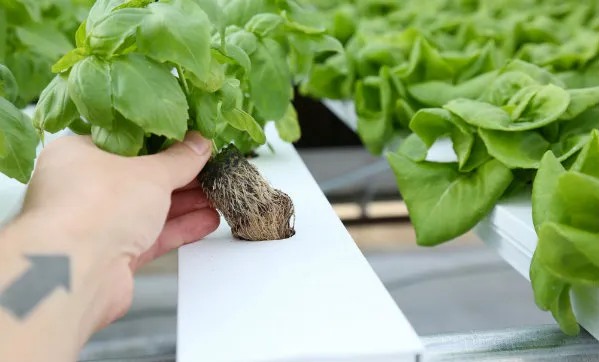
When setting up a hydroponic system, choosing the right aeration equipment is essential for creating an optimal growing environment. Adequate oxygenation is crucial for the health and growth of the plants, as it facilitates nutrient uptake and supports root respiration. There are several factors to consider when selecting aeration equipment for your hydroponic setup.
Firstly, the size of your hydroponic system will determine the type and capacity of the aeration equipment you need. Smaller setups, such as home hydroponic gardens or small-scale commercial operations, may benefit from air stones or diffusers connected to an air pump. These provide a steady supply of oxygen to the nutrient solution. Larger hydroponic systems, on the other hand, may require more powerful aeration systems, such as industrial-grade air compressors or aerators, to ensure sufficient oxygen distribution throughout the system.
Secondly, the type of hydroponic system you have will also influence your choice of aeration equipment. For example, in deep water culture (DWC) systems, where plant roots are submerged in nutrient-rich water, air stones or diffusers placed strategically throughout the reservoir are commonly used to oxygenate the solution. In nutrient film technique (NFT) systems, where a thin film of nutrient solution flows over the roots at a shallow depth, aerating the solution can be achieved by introducing oxygen through spray bars or misters. Each hydroponic system has its specific requirements, and selecting the appropriate aeration equipment will ensure optimal oxygenation and plant growth.
Ultimately, the key to choosing the right aeration equipment is understanding the specific needs of your hydroponic setup. Consider factors such as system size, type, and the oxygenation requirements of your chosen plants. By investing in the appropriate aeration equipment, you can create an ideal growing environment that promotes healthy plant growth and maximizes yields in your hydroponic system.
• Smaller hydroponic setups may benefit from air stones or diffusers connected to an air pump
• Larger hydroponic systems may require industrial-grade air compressors or aerators
• Deep water culture (DWC) systems commonly use strategically placed air stones or diffusers in the reservoir
• Nutrient film technique (NFT) systems can introduce oxygen through spray bars or misters
• Understanding the specific needs of your hydroponic setup is key to choosing the right aeration equipment
The Significance of Oxygen in Hydroponics for Nutrient Uptake
When it comes to hydroponics, the significance of oxygenation for nutrient uptake cannot be overstated. In traditional soil-based gardening, plants have access to oxygen through the air pockets in the soil. However, in hydroponics, where plants are grown without soil, the provision of oxygen becomes crucial for their growth and development.
Oxygen plays a vital role in the process of nutrient absorption in hydroponic systems. The roots of plants are responsible for taking up water and nutrients from the nutrient solution. In the absence of oxygen, the roots can become deprived, leading to poor nutrient uptake and stunted growth. Oxygenation ensures that the roots remain healthy and active, allowing them to efficiently absorb the necessary nutrients for the plants’ optimal development.
By ensuring adequate oxygenation in hydroponic systems, gardeners can promote the growth of stronger and healthier plants. The oxygen-rich environment stimulates root development, leading to increased nutrient uptake, enhanced plant metabolism, and improved overall plant health. When plants have access to sufficient oxygen, they can maximize their nutrient absorption potential, resulting in faster growth, larger yields, and better quality produce.
In the next sections, we will discuss the science behind oxygenation in hydroponic systems and explore the various methods and techniques to increase oxygen levels. We will also address the common challenges faced in providing adequate oxygen in hydroponics and provide practical tips to assess oxygen levels in your hydroponic setup. With a comprehensive understanding of the significance of oxygenation for nutrient uptake, you can effectively manage and optimize your hydroponic system to achieve outstanding gardening results.
• Oxygenation is crucial for nutrient uptake in hydroponics
• In traditional soil-based gardening, plants access oxygen through air pockets in the soil
• In hydroponics, where plants are grown without soil, providing oxygen becomes essential
• Oxygen plays a vital role in nutrient absorption by plant roots in hydroponic systems
• Lack of oxygen can lead to poor nutrient uptake and stunted growth
• Oxygenation ensures healthy and active roots for efficient nutrient absorption
• Adequate oxygenation promotes stronger and healthier plant growth
• Oxygen-rich environment stimulates root development and enhances plant metabolism
• Access to sufficient oxygen maximizes nutrient absorption potential for faster growth, larger yields, and better quality produce
• Next sections will discuss the science behind oxygenation in hydroponics
• Explore methods and techniques to increase oxygen levels
• Address common challenges faced in providing adequate oxygen
• Provide practical tips to assess oxygen levels in your hydroponic setup
Managing Oxygen in Hydroponics in Different Types of Systems
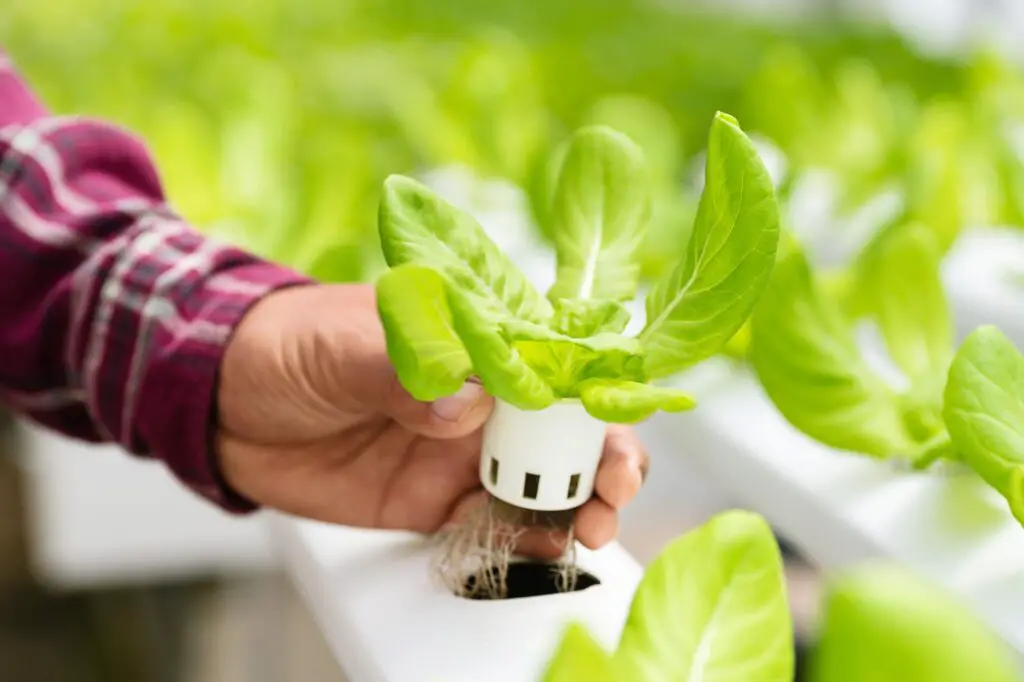
Managing Oxygen in Hydroponics is crucial in different types of hydroponic systems to ensure optimal plant growth and nutrient absorption. Each hydroponic system has its own unique requirements for oxygen levels, and understanding these needs is essential for successful cultivation.
In deep water culture (DWC) hydroponics, managing oxygen levels is particularly important as the plant roots are submerged in nutrient-rich water. Oxygenation in DWC systems can be achieved through the use of air stones or diffusers, which introduce oxygen into the water and create bubbles for enhanced aeration. Regular monitoring of dissolved oxygen (DO) levels is recommended to maintain an optimal range of 5 to 8 ppm (parts per million) for healthy root development.
Ebb and flow (flood and drain) systems also require careful management of oxygenation. These systems work by periodically flooding the growing medium with nutrient solution and then draining it back into a reservoir. To ensure proper oxygenation, it is essential to allow sufficient drainage time between flood cycles. This prevents the roots from being suffocated by excess water and promotes the uptake of oxygen from the surrounding air. Additionally, the use of aeration devices, such as air pumps and air stones, can further enhance oxygen levels in the growing medium, promoting vigorous plant growth.
• In deep water culture (DWC) hydroponics, oxygenation is achieved through the use of air stones or diffusers.
• Regular monitoring of dissolved oxygen (DO) levels is recommended to maintain an optimal range of 5 to 8 ppm for healthy root development in DWC systems.
• Ebb and flow (flood and drain) systems require careful management of oxygenation.
• Sufficient drainage time between flood cycles prevents roots from being suffocated by excess water and promotes uptake of oxygen from the surrounding air.
• Aeration devices such as air pumps and air stones can enhance oxygen levels in the growing medium in ebb and flow systems.
Improving Oxygen in Hydroponics in Deep Water Culture (DWC)
Deep Water Culture (DWC) hydroponics is a popular method among gardening enthusiasts due to its simplicity and effectiveness. However, ensuring optimal oxygenation is crucial for the success of this system. Insufficient oxygen levels can result in root rot, stunted growth, and decreased nutrient absorption.
One effective method of improving oxygenation in DWC hydroponics is by using air stones or diffusers. These devices create bubbles in the nutrient solution, increasing the surface area in contact with the air. This promotes the exchange of gases, allowing oxygen to dissolve into the water while facilitating the release of carbon dioxide.
Another technique to enhance oxygenation is by incorporating a DWC system with a recirculating oxygen supply. This involves adding a separate reservoir for holding oxygenated water, which is then pumped into the main DWC reservoir. This constant circulation of oxygen-rich water helps maintain high oxygen levels, ensuring healthy root growth and nutrient uptake.
By implementing these strategies to improve oxygenation in DWC hydroponics, gardeners can maximize the growth and vitality of their plants. Proper oxygenation not only supports nutrient absorption but also prevents the development of anaerobic conditions, ultimately leading to healthier and more productive hydroponic systems.
• Using air stones or diffusers to create bubbles in the nutrient solution
• Incorporating a recirculating oxygen supply with a separate reservoir for holding oxygenated water
• Constant circulation of oxygen-rich water helps maintain high oxygen levels
• Promotes healthy root growth and nutrient uptake
• Prevents the development of anaerobic conditions
Enhancing Oxygen in Hydroponics in Ebb and Flow (Flood and Drain) Systems
Enhancing the oxygenation in ebb and flow (flood and drain) systems is crucial for the overall health and productivity of your hydroponic garden. These systems involve periodically flooding the plant roots with nutrient-rich solution and then draining it away, allowing oxygen to reach the roots. To optimize oxygen levels in ebb and flow systems, there are several key strategies you can employ.
Firstly, it is essential to ensure that the ebb and flow system is designed and operated effectively. The flood duration should be balanced with the drain time to provide an appropriate amount of oxygen to the roots. Monitoring and adjusting the flood and drain intervals based on factors such as plant stage, temperature, and humidity can help maintain optimal oxygen levels.
Secondly, incorporating aeration devices into the system can greatly enhance oxygenation. Air stones, air pumps, and diffusers can be installed to introduce oxygen into the nutrient solution during both the flood and drain phases. These devices create bubbles that increase surface area and facilitate the exchange of gases, ensuring a constant supply of dissolved oxygen to the roots.
By implementing these strategies, you can effectively enhance the oxygenation in ebb and flow systems, promoting vigorous plant growth and maximizing the overall success of your hydroponic garden.
• Ensure that the ebb and flow system is designed and operated effectively
• Balance flood duration with drain time to provide appropriate oxygen levels to roots
• Monitor and adjust flood and drain intervals based on plant stage, temperature, and humidity
• Incorporate aeration devices such as air stones, air pumps, and diffusers into the system
• Introduce oxygen into nutrient solution during both flood and drain phases
• Create bubbles to increase surface area for gas exchange
• Maintain a constant supply of dissolved oxygen to the roots.
Oxygen in Hydroponics Techniques for Aeroponics
Aeroponics is a cutting-edge hydroponic technique that involves growing plants in a misty environment, allowing the roots to be suspended in the air. This method delivers oxygen directly to the roots, maximizing nutrient absorption and promoting exceptional plant growth. In order to ensure optimal oxygenation in aeroponic systems, various techniques can be employed.
One effective method is the use of high-pressure misting systems. These systems generate a fine mist of water and nutrients, creating an environment rich in oxygen that surrounds the roots. By breaking the nutrient solution into tiny droplets, this technique enhances the surface area available for gas exchange, resulting in improved oxygen absorption. Additionally, the misting action prevents the roots from drying out and reduces the risk of pathogens or diseases. High-pressure misting systems can be automated and controlled to maintain consistent and suitable oxygen levels for the plants, providing them with a perfect growing environment.
Another proven technique for oxygenation in aeroponics is the use of air stones or diffusers. Placing air stones or diffusers inside the nutrient reservoir or along the delivery lines allows for the introduction of oxygen-rich air into the system. As the tiny air bubbles rise through the nutrient solution, they aerate and oxygenate the roots, enhancing their growth and nutrient uptake. This not only ensures an adequate supply of oxygen but also helps to prevent the roots from becoming waterlogged or suffocated. Air stones and diffusers can be easily installed and adjusted to meet the specific oxygenation requirements of different plants and growing conditions. This technique is widely used and highly effective in promoting robust plant development in aeroponic systems.
• High-pressure misting systems generate a fine mist of water and nutrients, creating an oxygen-rich environment for the roots.
• The small droplets increase the surface area available for gas exchange, improving oxygen absorption.
• Misting action prevents root drying and reduces the risk of pathogens or diseases.
• Automated control allows for consistent and suitable oxygen levels in aeroponic systems.
• Air stones or diffusers introduce oxygen-rich air into the nutrient reservoir or delivery lines.
• Rising air bubbles aerate and oxygenate the roots, enhancing growth and nutrient uptake.
• Helps prevent waterlogging or suffocation of the roots.
• Easily adjustable to meet specific oxygenation requirements.
Oxygen in Hydroponics Solutions for Nutrient Film Technique (NFT) Systems
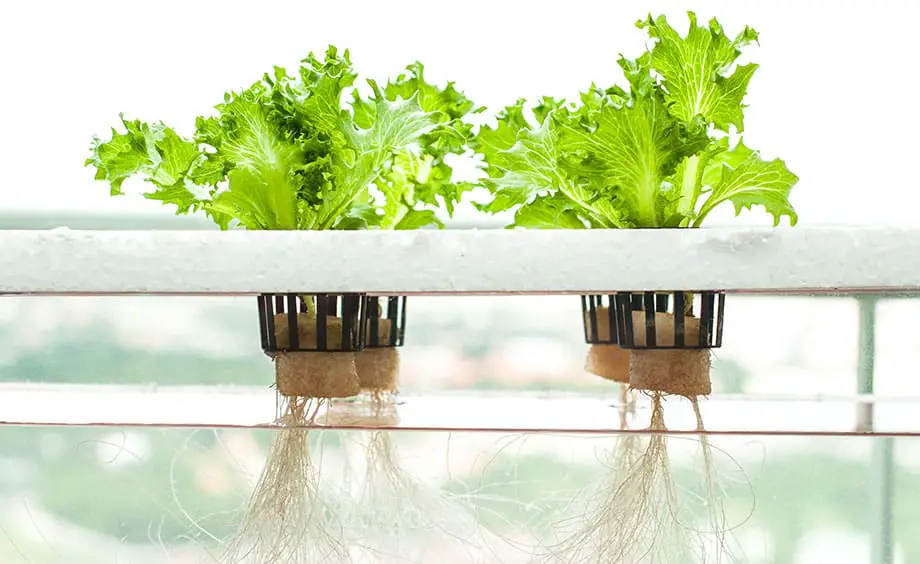
Nutrient Film Technique (NFT) systems are a popular choice for hydroponic gardening due to their efficient use of water and space. However, ensuring adequate oxygenation is crucial for the successful growth of plants in these systems. Insufficient oxygen can lead to oxygen deprivation in the roots, resulting in root rot and poor nutrient uptake.
To address this challenge, there are several effective oxygenation solutions for NFT systems. One option is to incorporate aeration stones or diffusers in the nutrient solution reservoir. These devices create tiny air bubbles, increasing the surface area for oxygen exchange and promoting oxygenation. Another method is to employ submerged agitation, where a pump or paddle creates turbulence in the nutrient film, allowing oxygen to be absorbed by the roots. Additionally, some growers employ supplemental air pumps or air stones directly beneath the nutrient film to provide a continuous supply of oxygen to the roots.
It is essential to choose an oxygenation solution that suits the specific needs of your NFT system. Factors such as the size and scale of your setup, the type of plants being grown, and the nutrient solution composition should all be considered when selecting the appropriate method of oxygenation. By ensuring adequate oxygenation in your NFT system, you can help optimize plant health and maximize growth and yields.
• Incorporate aeration stones or diffusers in the nutrient solution reservoir to create tiny air bubbles and increase oxygen exchange.
• Employ submerged agitation using a pump or paddle to create turbulence in the nutrient film, allowing for oxygen absorption by the roots.
• Use supplemental air pumps or air stones directly beneath the nutrient film to provide a continuous supply of oxygen to the roots.
• Consider factors such as size and scale of your NFT system, type of plants being grown, and nutrient solution composition when selecting an appropriate method of oxygenation.
• Ensure adequate oxygenation in your NFT system to optimize plant health and maximize growth and yields.
Here’s a table with information about the role of oxygen in hydroponics:
| Aspect | Description |
|---|---|
| Importance of Oxygen | Essential for root respiration and nutrient uptake in plants. |
| Root Zone Oxygenation | Oxygen availability in the root zone promotes healthy root growth. |
| Oxygen Sources | – Dissolved oxygen in the nutrient solution. – Air stones or diffusers for oxygenation in water-based systems. – Adequate aeration in media-based systems. |
| Oxygen Levels | Maintain dissolved oxygen levels between 5-8 ppm for optimal plant health. |
| Root Health | Insufficient oxygen can lead to root diseases and poor nutrient absorption. |
| Water Temperature | Warmer water holds less dissolved oxygen; control temperature for optimal levels. |
| Aeration Systems | – Air pumps and air stones in nutrient reservoirs. – Venturi systems for oxygenation in nutrient solutions. |
| Monitoring | Regularly measure dissolved oxygen levels using meters or sensors. |
| System Types | Crucial in deep water culture (DWC), nutrient film technique (NFT), and other water-based hydroponic systems. |
| Emergency Oxygenation | Have backup systems or methods for emergency aeration in case of power outages or equipment failures. |
| Aeroponics | Particularly oxygen-efficient, as plant roots are suspended in air and misted with nutrient solution. |
| Benefits | – Enhances nutrient uptake. – Prevents anaerobic conditions. – Stimulates root growth. |
| Challenges | – Oxygen levels can drop in warm water. – Overwatering can lead to reduced oxygen availability. |
Oxygen in Hydroponics: Ensuring adequate oxygen levels is crucial in hydroponics to support plant growth, nutrient absorption, and overall system health. Different hydroponic systems may require specific considerations for maintaining optimal oxygen levels in the root zone.
Tips for Maintaining Optimal Oxygen in Hydroponics Levels
Maintaining optimal oxygen levels in your Oxygen in Hydroponics systems is crucial for the health and productivity of your plants. Without sufficient oxygen, the roots can become oxygen-starved, leading to poor nutrient uptake, root rot, and stunted growth. To ensure that your plants receive enough oxygen, here are some tips to follow.
1. Use proper aeration equipment: Investing in high-quality aeration equipment is essential for maintaining optimal oxygen levels in your hydroponic system. Air pumps, air stones, and diffusers are commonly used to introduce oxygen into the nutrient solution. When choosing your equipment, consider the size of your system and the oxygen requirements of your plants.
2. Monitor oxygen levels regularly: Regularly assessing the dissolved oxygen (DO) levels in your hydroponic system is vital to identify any issues and make necessary adjustments. Use a dissolved oxygen meter to measure the oxygen concentration in the nutrient solution. Ideally, the DO levels should be between 5-8 parts per million (ppm) for most hydroponic plants. Keep in mind that different plants may have varying oxygen requirements, so it’s essential to research the specific needs of your crops.
By implementing these tips, you can ensure that your Oxygen in Hydroponics systems maintains optimal oxygen levels, promoting healthy growth and maximizing crop yields. Taking proactive steps to provide adequate oxygen will result in thriving plants and help you achieve success in your hydroponic gardening endeavors.
• Use proper aeration equipment:
– Invest in high-quality air pumps, air stones, and diffusers.
– Consider the size of your system and Oxygen in Oxygen in Hydroponics requirements of your plants when choosing equipment.
• Monitor oxygen levels regularly:
– Assess dissolved oxygen (DO) levels using a meter.
– Aim for DO levels between 5-8 ppm for most hydroponic plants.
– Research specific oxygen requirements for different crops.
By following these tips, you can ensure that your hydroponic system maintains optimal oxygen levels. This will promote healthy growth and maximize crop yields. Taking proactive steps to provide adequate oxygen is essential for success in hydroponic gardening.
Why is Oxygen in Hydroponics important?
Oxygen is crucial in hydroponics as it helps in the process of respiration for plant roots, allowing them to absorb nutrients and grow optimally.
How does work Oxygen in Hydroponics systems?
Oxygenation in hydroponic systems is achieved through the use of aeration equipment such as air pumps and air stones, which introduce oxygen into the nutrient solution.
What are the benefits of Oxygen in Hydroponics?
Oxygenation provides several benefits in hydroponics, including improved nutrient uptake, enhanced root growth, prevention of root diseases, increased plant vigor, and overall higher crop yields.
What are the common challenges faced in providing adequate Oxygen in Hydroponics?
Common challenges include inadequate aeration, clogged or inefficient aeration equipment, high water temperatures, low dissolved oxygen levels, and poor oxygen distribution within the system.
How can I assess the levels of Oxygen in Hydroponics?
You can assess oxygen levels using a dissolved oxygen (DO) meter or test kit, which measures the concentration of oxygen dissolved in the nutrient solution.
What factors can affect oxygen levels in hydroponics?
Factors such as water temperature, nutrient concentration, pH levels, water movement, and the efficiency of aeration equipment can all affect oxygen levels in hydroponics.
Why is dissolved Oxygen in Hydroponics?
Dissolved oxygen is important as it directly affects the health and growth of plant roots, ensuring they receive the necessary oxygen for respiration and nutrient absorption.
What methods can I use to increase Oxygen in Hydroponics?
Methods to increase oxygenation include using larger air stones, increasing the number of air pumps, adjusting water temperature, improving water movement, and ensuring proper aeration system maintenance.
How do I choose the right aeration equipment for my Oxygen in Hydroponics setup?
It is essential to consider factors like system size, water volume, type of hydroponic system, and the specific oxygen needs of your plants when choosing aeration equipment for your setup.
Why is significant for nutrient uptake Oxygen in Hydroponics?
Proper oxygenation ensures that plant roots have access to oxygen, allowing them to absorb nutrients efficiently, leading to healthier plants and improved nutrient uptake.
How can I manage oxygenation in different types of hydroponic systems?
Each hydroponic system may require specific oxygenation techniques. It is important to understand the requirements of the system you are using and adjust aeration accordingly.
How can I improve oxygenation in Deep Water Culture (DWC) hydroponics?
Improving oxygenation in DWC systems can be achieved by increasing the number and size of air stones, adjusting water temperature, and ensuring proper water circulation.
What are some ways to enhance Oxygen in Hydroponics in Ebb and Flow (Flood and Drain) systems?
Enhancing oxygenation in Ebb and Flow systems can be done by incorporating aeration devices like air diffusers or air stones, providing proper drainage, and maintaining a balanced water level.
What are some Oxygen in Hydroponics techniques for Aeroponics?
In Aeroponic systems, oxygenation can be enhanced by using misting nozzles, creating fine droplets of nutrient solution, and providing intermittent misting cycles to ensure root oxygenation.
How can I improve Oxygen in Hydroponics in Nutrient Film Technique (NFT) systems?
To improve oxygenation in NFT systems, ensure proper slope of the channels to facilitate oxygen exchange, maintain appropriate flow rates, and periodically flush the system to prevent clogging.
What are some tips for maintaining optimal levels of Oxygen in Hydroponics?
Some tips include regularly cleaning and maintaining aeration equipment, monitoring and adjusting water temperature, optimizing water movement, and regularly assessing dissolved oxygen levels.


